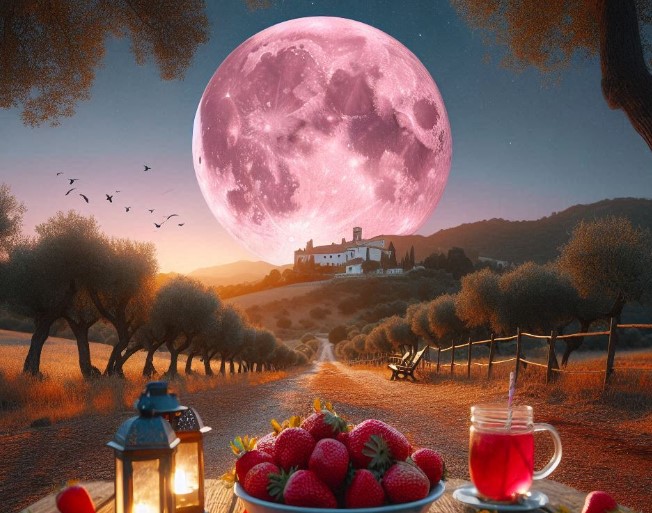Each year, astronomy enthusiasts eagerly await June when the so-called Strawberry Moon appears in the firmament, becoming the protagonist for every lover of the night sky. This special full moon, also known as the Honeymoon, Rose Moon, or Hot Moon, carries a fascinating history and a unique visual experience. But where does the term “Strawberry Moon” come from, and how can you best observe this impressive phenomenon in Spain?
The Origins of the Strawberry Moon: A Connection to Nature
The term “Strawberry Moon” commonly used in Spain is derived from the Algonquian tribes, Native Americans. It is closely associated with the harvesting season of wild strawberries, which traditionally occurs in June. However, not only the harvest gave the moon its name; its characteristic coloration also plays a role. Unlike most other full moons of the year, the Strawberry Moon can take on a striking reddish, pinkish, or orange hue, making it a true eye-catcher.
When and Where to Observe the Strawberry Moon 2025 in Spain?
The exact date for the arrival of this celestial event is June 11, 2025. For astronomy enthusiasts and anyone wishing to witness this natural spectacle, it is advisable to mark this day on the calendar and plan the observation carefully.
The Optical Effect Behind the Color
The fascinating red, pink, and orange tones of the Strawberry Moon are the result of an optical effect caused by the Earth’s atmosphere. The atmosphere scatters blue light from the sun more effectively, allowing warmer tones such as red, orange, and pink to pass through unhindered. This effect is particularly strong when the moon is close to the horizon, which is often the case at this time of year.
Tips for Optimal Observation of the Strawberry Moon
To get the most out of observing the Strawberry Moon, you should consider a few recommendations:
- Check the Time: Inform yourself about the exact times of sunrise and sunset in your region to know the time of moonrise and its lowest position above the horizon.
- Choose a Location: Find a clear spot, ideally an elevated position with an unobstructed view of the horizon.
- Avoid Light Pollution: Move away from urban areas and their light pollution to ensure the clearest possible view. Rural areas or mountains are ideal for this.
- Check the Weather: Check the weather forecast for clear skies, as clouds can significantly impede visibility of the moon.
Modern Tools for Moon Observation
To deepen the moon observation experience, you can use a variety of mobile applications that provide detailed information about the position of celestial bodies in real-time. Popular apps like Stellarium, SkyView, or Star Walk can help you easily locate the moon and other astronomical objects. Combine this plan with a relaxed evening stroll or a photo session to capture the spectacle – truly a perfect plan for an unforgettable evening.
Other Special Full Moons Throughout the Year
It is fascinating to know that each full moon throughout the year has a special meaning and its own name, often associated with natural events or cultural traditions:
- January: Wolf Moon
- February: Snow Moon
- March: Worm Moon (responds to the first traces of worms in spring)
- April: Pink Moon
- May: Flower Moon
- June: Strawberry Moon
- July: Buck Moon
These names reflect the close connection between human life and the cycles of nature.




